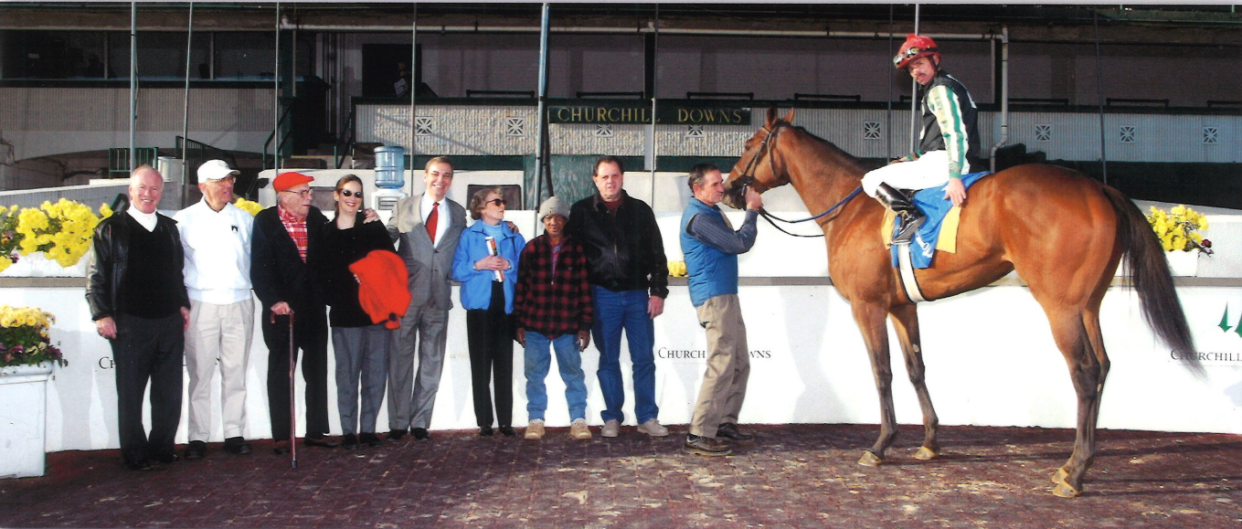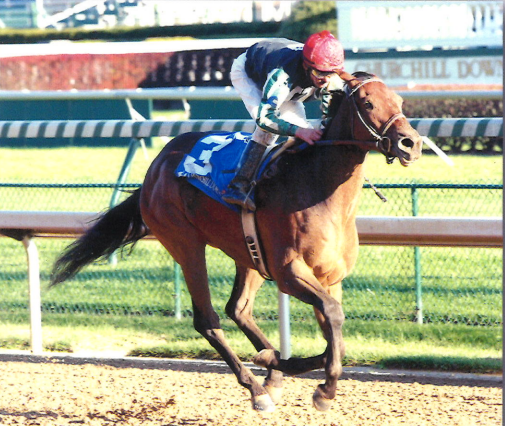Deaths at the track are tragic, but here's why I will always love horseracing.

When I was 19 years old and working for $20.00 a night in the press box at Miles Park, I saw my first horse die on the racetrack. Ironically, the horse’s name was Nancy H, — I have a sister by the same name. The filly broke her leg while running in a race and had to be “put down” or “destroyed” was the term used back then. As I watched transfixed, no one else at the track seemed particularly interested in the horse’s demise as a veterinarian prepared a lethal dose of whatever drug is used to euthanize horses. When the filly fell to the ground, I bitterly wrote “killed” next to her name in the program.
Joe Gerth: I used to love the Kentucky Derby, but horse deaths have caused me to hate racing
More: The end of his offspring: A day with Secretariat's last known daughter, Trusted Company
Many happy memories at the racetrack started as a family tradition.
What an awful nightmare and yet, 53 years later, I can count among the happiest memories of my life spending many a day at racetracks all over America with family and friends. My love affair with horseracing started with my maternal grandfather, Leo O’Donnell, who was a respected racing official and, before that, a successful trainer and breeder. He trained a horse, a filly named Misweet, who ran in the memorable 1945 Kentucky Derby, the one held in June because of the war.
In his second career as a steward (there are three stewards at every racetrack who are tasked with enforcing the rules of racing), I eventually became part of grandfather O’Donnell’s employment package: if a track wanted him to work there, they had to find a position for me, too. Consequently, I worked a good part of the 1970’s as either a mutuel clerk or racing official making numerous friends that I still enjoy seeing today.
In addition to being paid for jobs I thoroughly loved, racing appealed to my emotions — at a racetrack in Maryland (Timonium), I was a patrol judge in a tower on the far turn where the only sound was the rhythmic pattern of the horses pounding their way toward me growing louder as they approached punctuated by the occasional shout of a jockey angling for position. The exertions of these athletes, equine and human, were mesmerizing at such close range.
In the 1990’s, at an auction at Keeneland, my mother bought a broodmare in foal and thus began her small stable of homebred horses that provided our family so many thrills. Mom’s proudest moment in racing was being handed a trophy by Penny Chenery— the owner of the mighty Secretariat — after winning a race at Churchill Downs named for the famous Triple Crown winner. The Mary Lou Heleringer horses, expertly trained by Walter Bindner, Jr. and Merrill Scherer among others, won races all over the Midwest. There is just nothing in the world of sports as exhilarating as watching a horse whose rider is wearing your colors — black, white “O” [for O’Donnell], green and white striped sleeves with a cherry cap — come flying down the stretch to win a race.
More: After 12 horse deaths at Churchill Downs, national oversight body calls emergency summit
More: Betting on the Kentucky Derby? How Churchill Downs trains its 200 new mutuel clerks

Horseracing has a tragic side
These unforgettable experiences are yet leavened by the fact that horseracing unquestionably has a tragic side. Despite a scintillating Kentucky Derby win three weeks ago by Mage, that ultimate achievement was diminished by the deaths of seven horses during Derby week, some while racing, others during training hours. The equine fatalities triggered dual investigations by both Churchill Downs and Horseracing Integrity and Safety Authority, the new national agency that governs the sport in most aspects. Absurdly, on May 19 a third call for a “comprehensive investigation” was demanded by no less than the Congressional Animal Protection Caucus of the U. S. House of Representatives. This is the same U.S. House that refuses to consider any legislation to address the serial mass murders in this country of school children and other innocents by mentally ill people wielding rapid-firing assault rifles that no one, sane or insane, should be allowed to own.
As an alleged writer, I can’t seem to find the right words to describe what horseracing means to me, intrinsically and in every other way. Lauren Hillenbrand, who beautifully wrote the best-selling book "Seabiscuit: An American Legend,” once said: “I think we come to the track because the act of defying our fears and venturing something, even if it is lost, is liberating. . . the racetrack is, for me, the most optimistic place on earth.”
In that vein, I will continue to embrace the sport and have eagerly started the process of passing on the traditions to our grandchildren by taking them to the races, teaching them how to read the Daily Racing Form and praying fervently that they never see a Nancy H. or any other gallant horse “put down.” I hope they will be as excited as I am by a game horse reaching for everything it has in deep stretch to win on the wire and to feel the anticipation in their souls when the cry is heard “And They’re Off!”
Bob Heleringer is an attorney and former Kentucky state Representative. He can be reached at helringr@bellsouth.net.
This article originally appeared on Louisville Courier Journal: Horses are dying for the sport but I love the track, betting on a race

